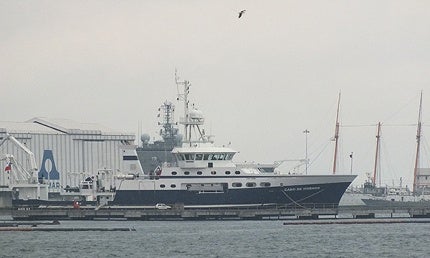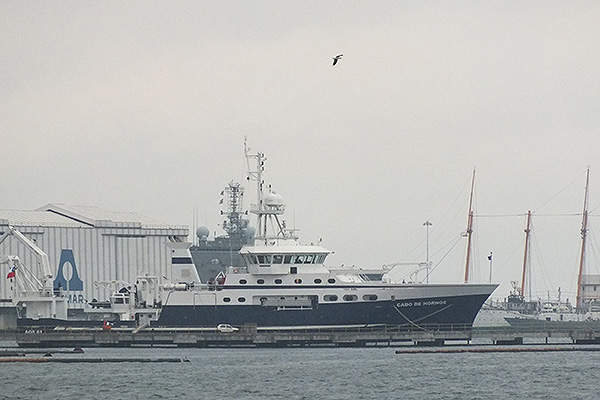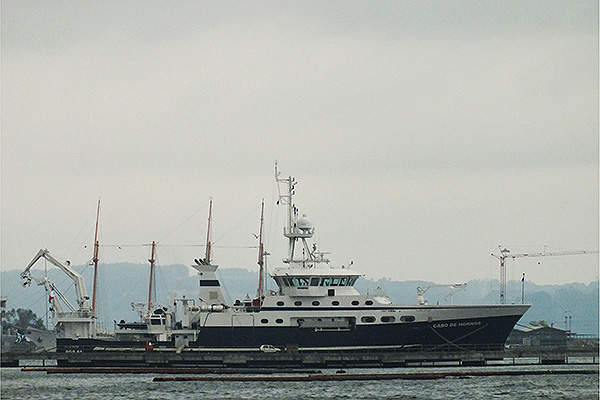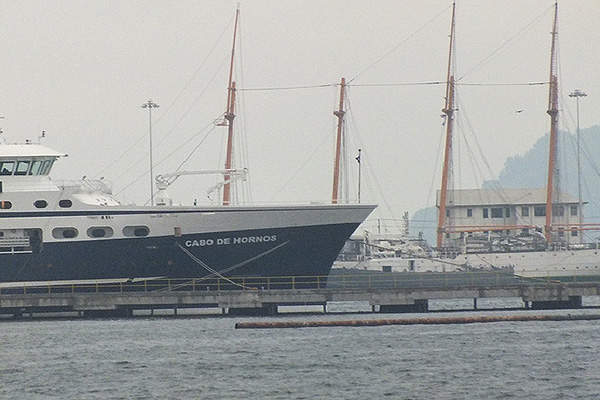
The R/V Cabo de Hornos is an advanced and versatile oceanographic and fisheries research vessel owned by the Chilean Navy. Norwegian ship designer Skipsteknisk designed the vessel under the designation ST-367.
She was constructed as a replacement to Vidal Gormaz, which was decommissioned from service in August 2010. The construction was carried out at Asmar Talcahuano shipyard in Talcahuano, Chile, from 2009 to 2013, and delivery was made in April 2013.
Cabo de Hornos is capable of carrying out primary duties including fishery research operations, acoustic research operations, environmental research operations and seabed mapping globally.
Cabo de Hornos ship features
The vessel is built according to ICES Cooperative Research Report no. 209, which limits underwater radiated noise from research vessels. The vessel produces 99% less underwater noise compared with conventional marine research vessels. Asmar used the FORAN CAD/CAM system to develop the vessel.
The 74.1m long vessel has a moulded breadth of 16.60m. Its length between perpendiculars is 66.10m, depth to main deck is 8.50m and depth to lower deck is 5.80m. It has an operating draft of 5.40m and a gross tonnage of 3,068t.
The oceanographic and fisheries research vessel has been assigned the class notation GL + 100 A5 E + MC AUT E, Oceanographic Research Vessel by Germanischer Lloyd.
Laboratories and scientific equipment onboard the ship
Cabo de Hornos features specialised laboratories including a wet lab, also known as the fish lab, with a connecting freezer, a dry lab, chemical lab, water sampling lab, IT central room and a meeting room.
Scientific equipment such as echo sounders and sonars were supplied by Kongsberg Simrad. This included sonde / CTD Rosette water sampling system, fully equipped weather station, a data acquisition system and scientific computer system network.
Also included were two multibeam and one singlebeam echosounder, sound velocity profiler, acoustic doppler current profiler (ADCP), ocean surveyor, one omni directional (long range) sonar for biomass and one HiPAP 500 type high precision acoustic positioning subsystem.
R/V Cabo de Hornos’s accommodation and tank capacities
The research vessel can accommodate 68 people, including nine officers, 34 seamen and 25 scientists.
Cabo de Hornos is equipped with tanks that are capable of carrying 438m³ of fuel, 138m³ of fresh water, 490m³ of ballast water, 5.5m³ of lubricating oil and 7m³ of hydraulic oil.
Propulsion and power
Cabo de Hornos features a diesel electric propulsion plant comprising two DC electric motors from Ansaldo, each with a power rating of 1,500kW at 180rpm and one Lips FP propeller from Wartsila. The propulsion system allows the vessel to cruise at a maximum speed of 15.5k.
The power plant consists of three Wartsila 8L20 diesel generator sets rated at 1,600kW and three Ansaldo alternators rated at 1,520kW.
An 883kW retractable azimuth thruster and a 450kW tunnel thruster provide smooth manoeuvring to the vessel. Both the thrusters are placed in the fore, while an additional tunnel thruster of 450kW is placed astern.
Deck equipment on the Chilean research vessel
The Chilean research vessel is equipped with fishery and scientific winches supplied by Ibercisa. It includes two trawl winches of 32t, two Gilson winches of 18t, one net sounder slip-ring winch (4t), one CTD winch (4.6t), one hydrographic winch (4t), two geophysics winches (19.2t), two general purpose winches (1.5t) and one towed acoustic body winch (4t). It is also equipped with one demersal net drum (34t) and one split net drum (14t).
Cranes and handling equipments supplied by Triplex include three elbow derrick cranes, CTD davits, guide pins, A-frame and T-frame oceanographic frames, and hydraulic power packs.
Related content
Auxiliary General Oceanographic Research (AGOR) Vessels, USA
Armstrong-Class auxiliary general oceanographic research (AGOR) vessels are being built by Dakota Creek Industries (DCI) for the US Navy’s Office of Naval Research (ONR).
RRS Discovery Oceanographic Research Vessel, United Kingdom
Royal Research Ship (RRS) Discovery is a new, state-of-the-art, multi-role oceanographic research vessel being built for the UK’s main environmental research organisation, National Environment Research Council (NERC).
Artemis Self Propelled Cutter Suction Dredger, Kinderdijk, Netherlands
Artemis is the second self propelled cutter suction dredger (CSD) built for Van Oord, a company based in the Netherlands.





